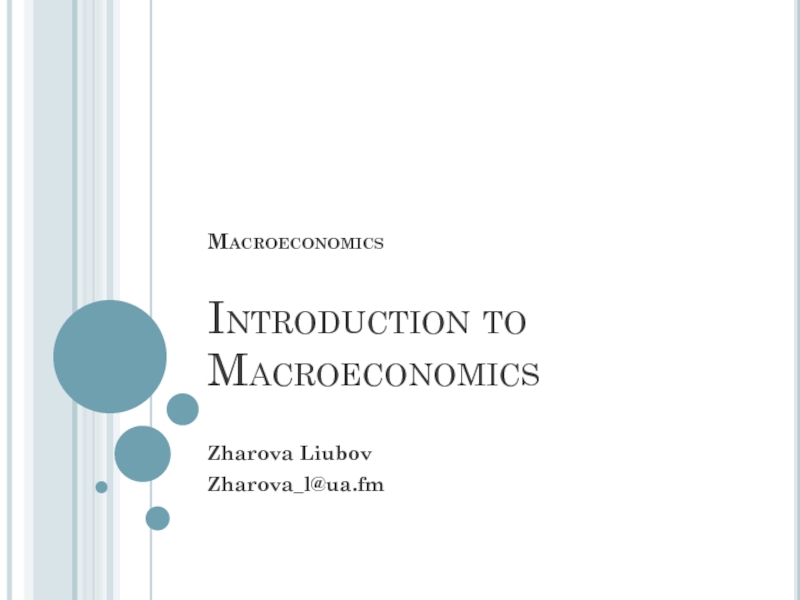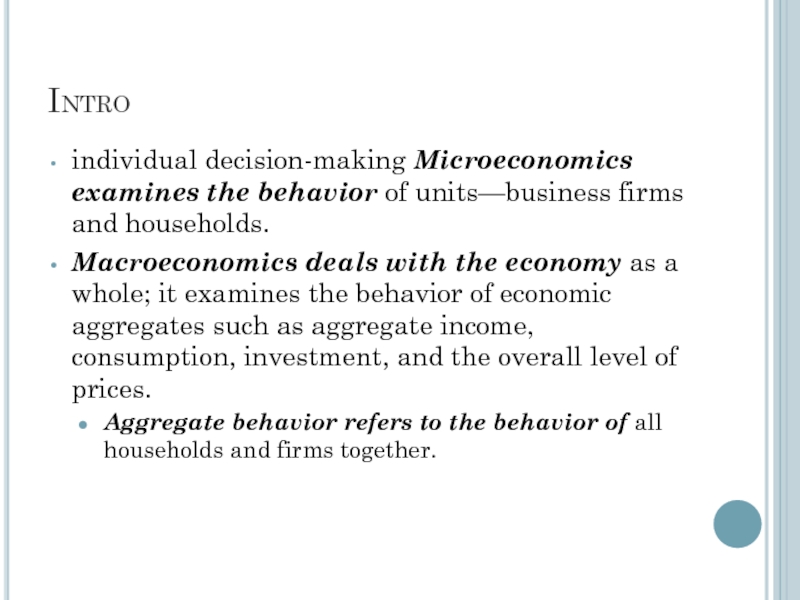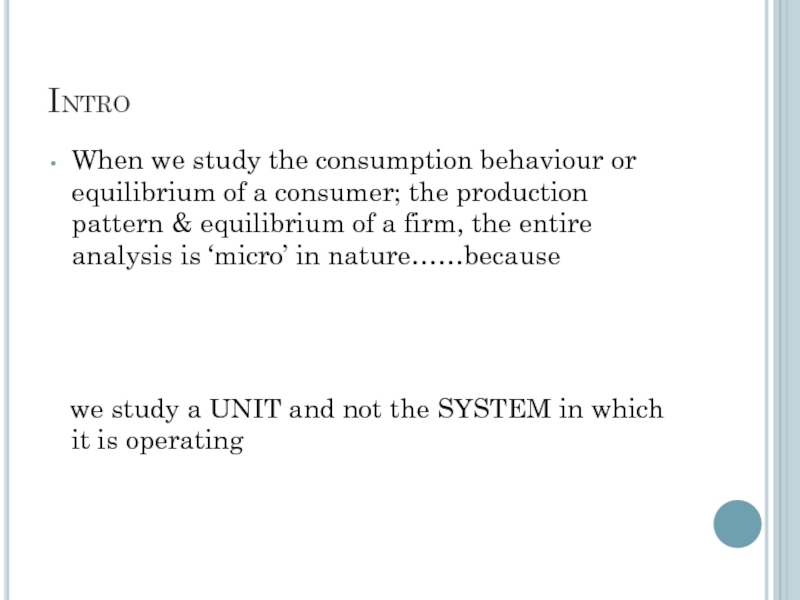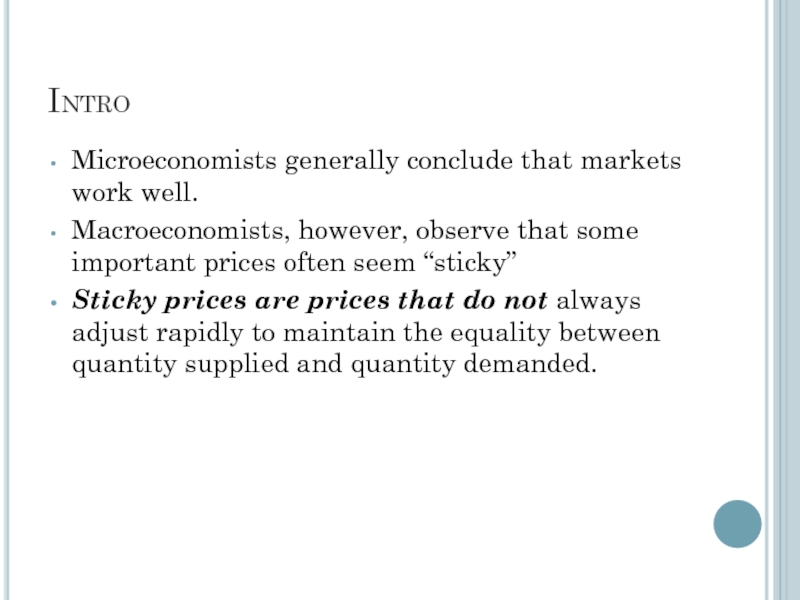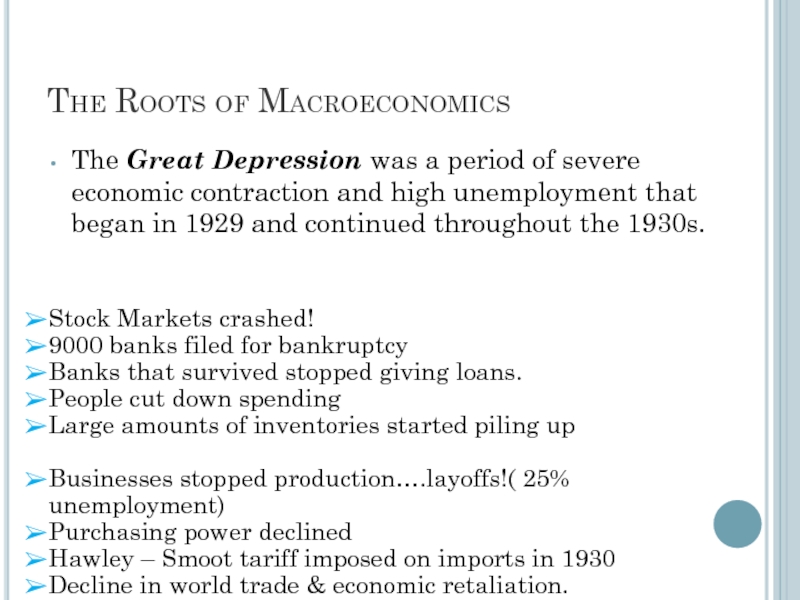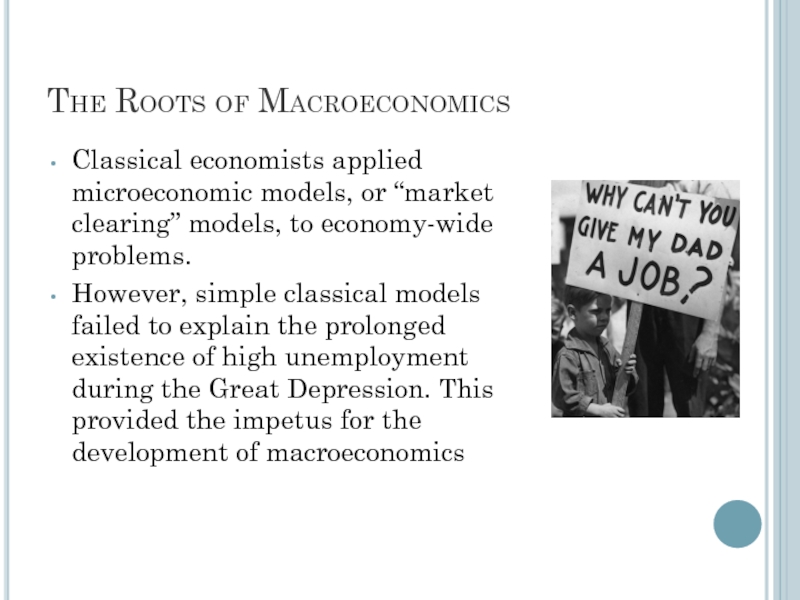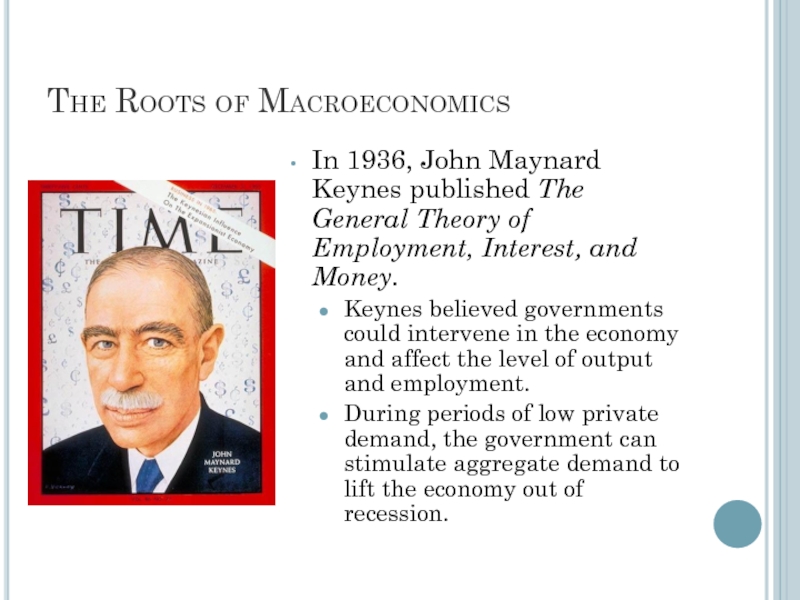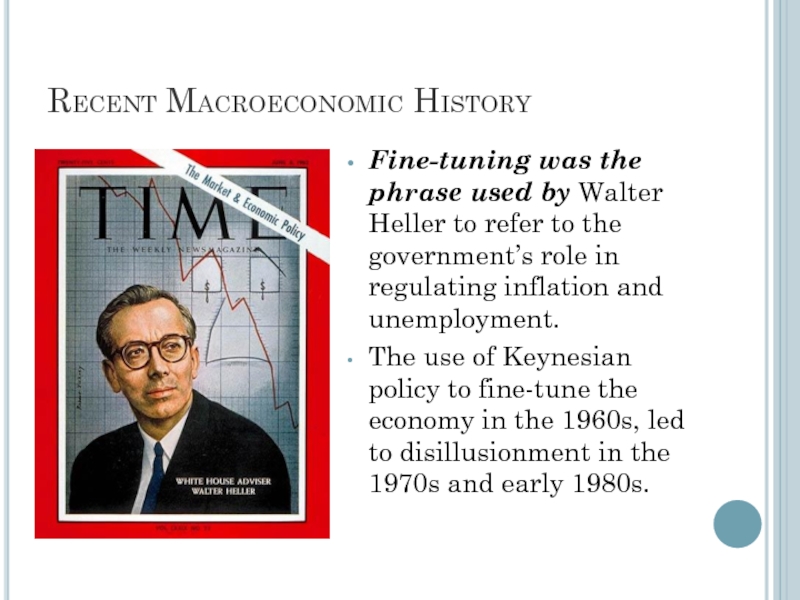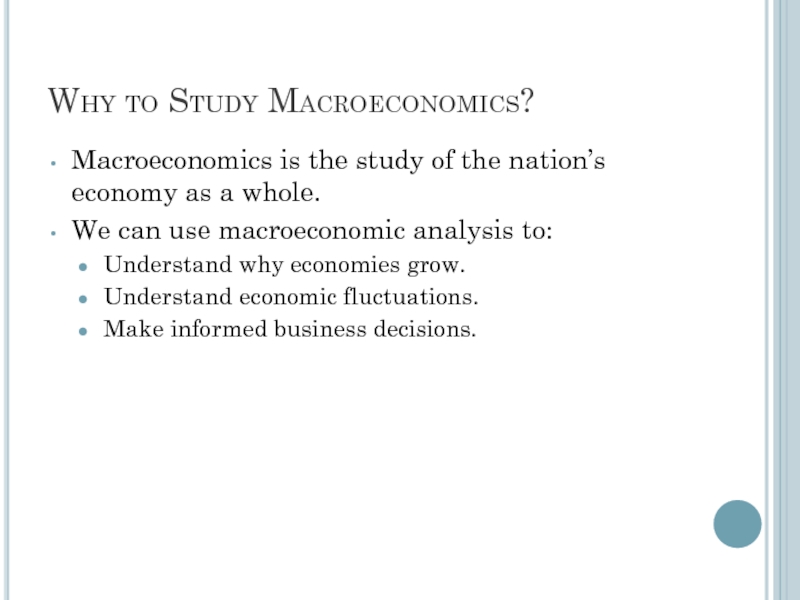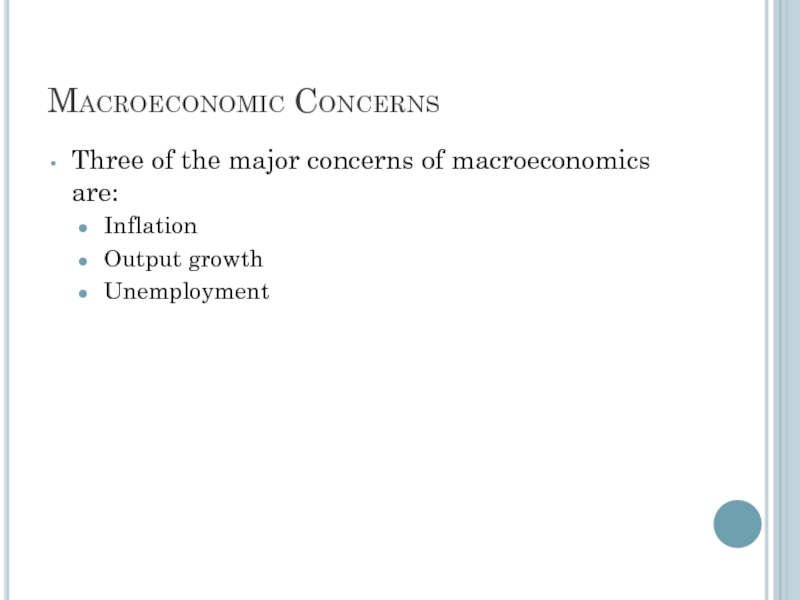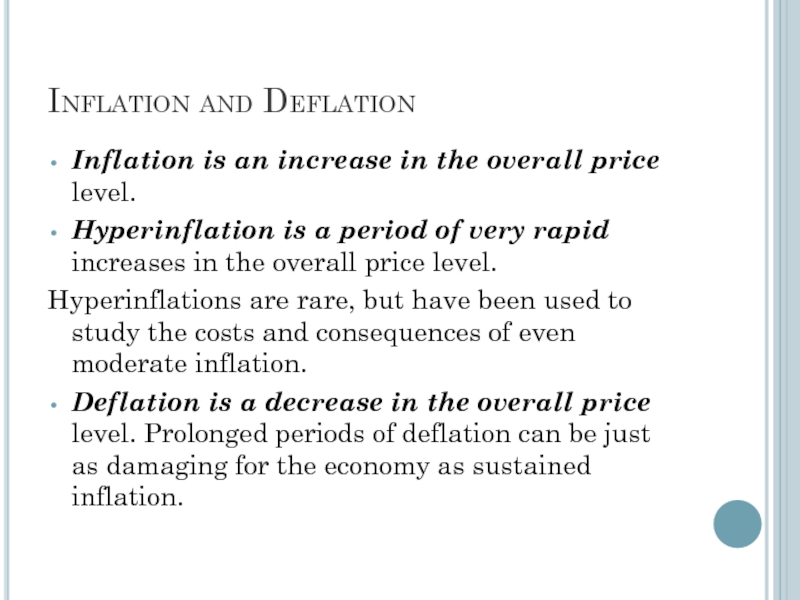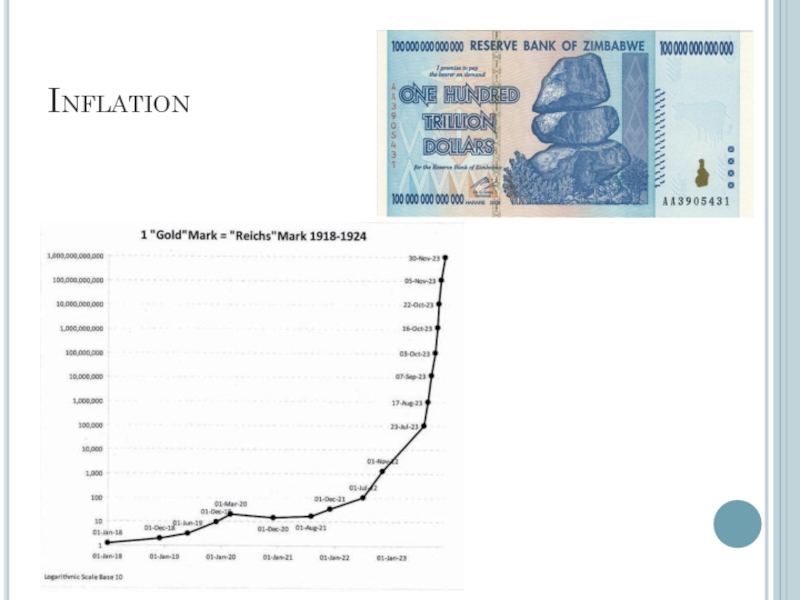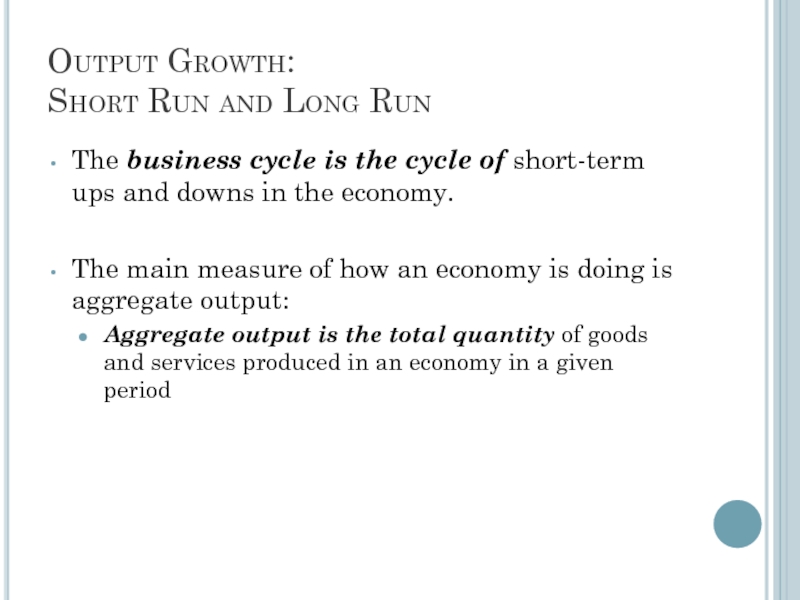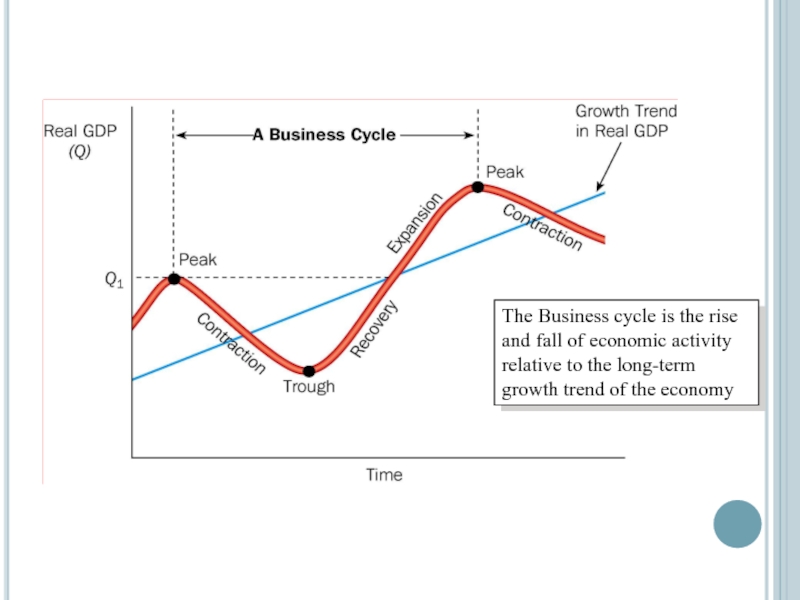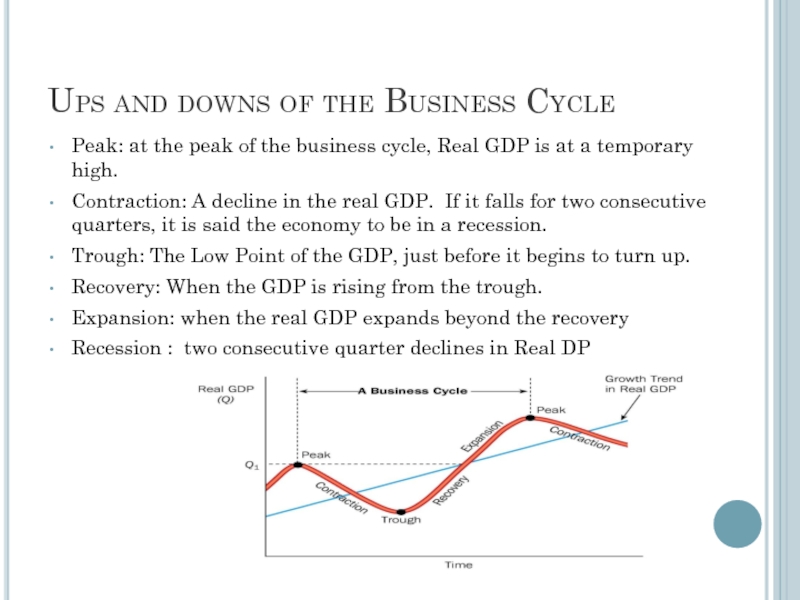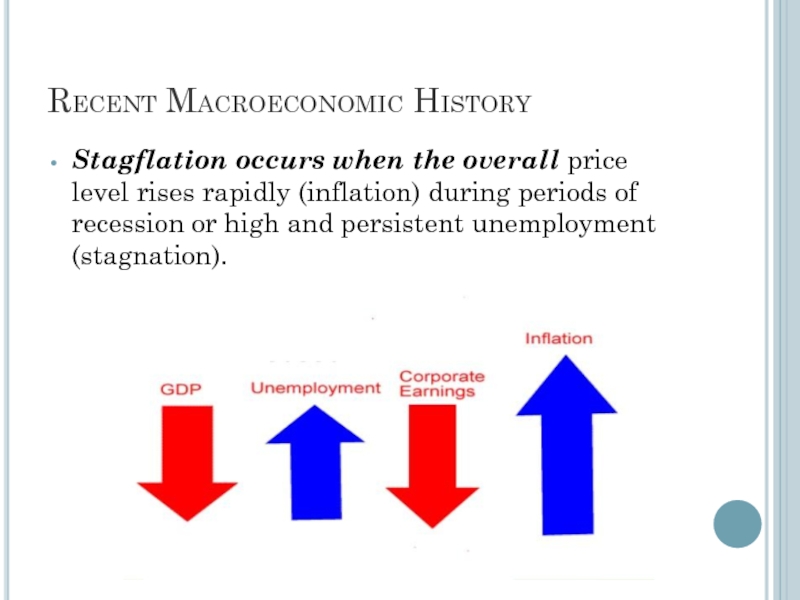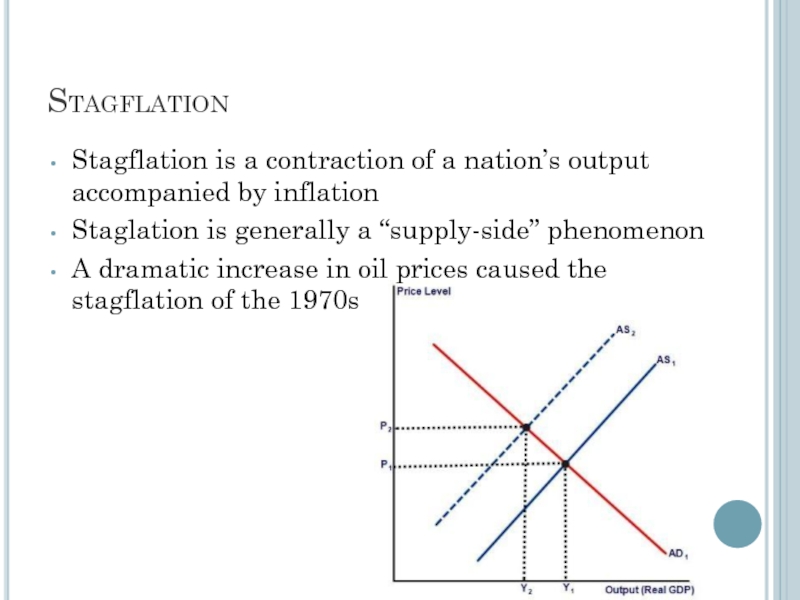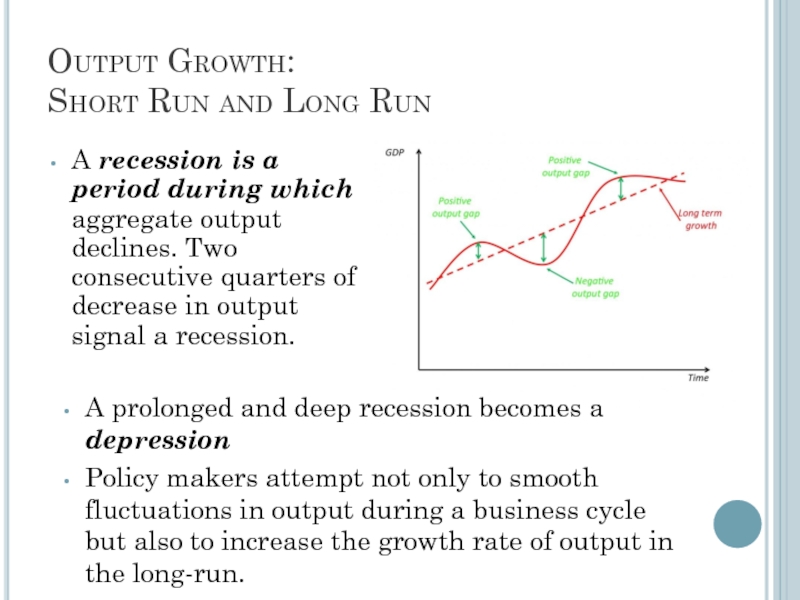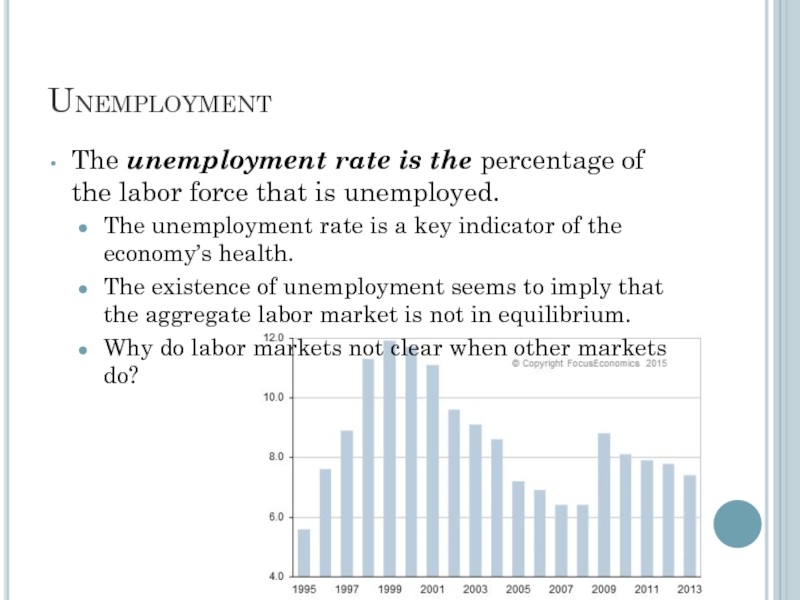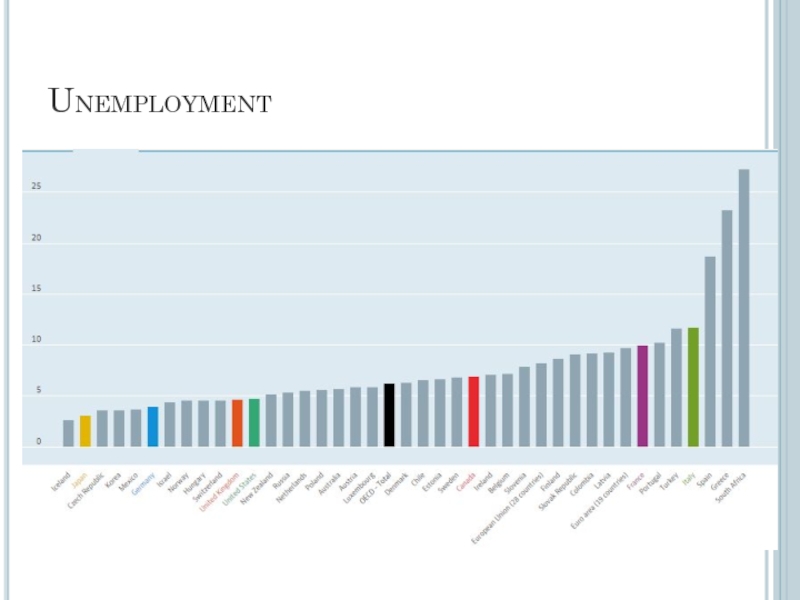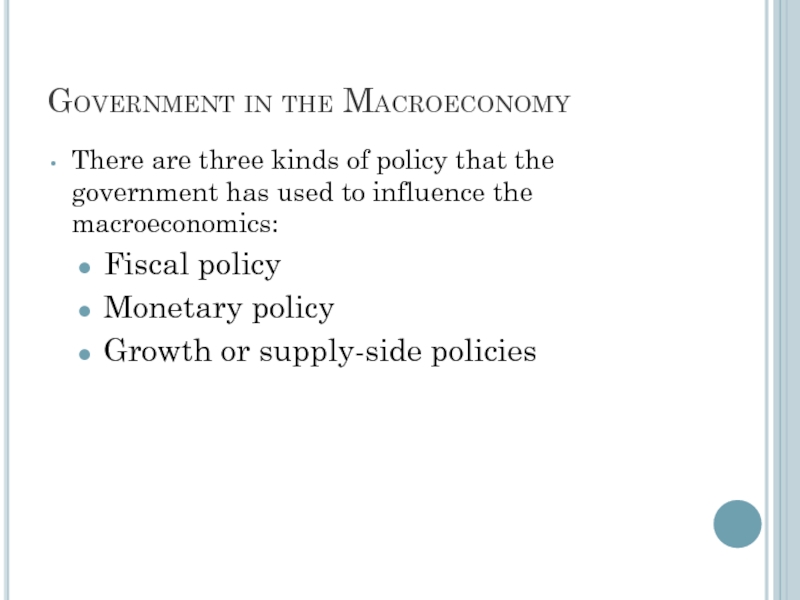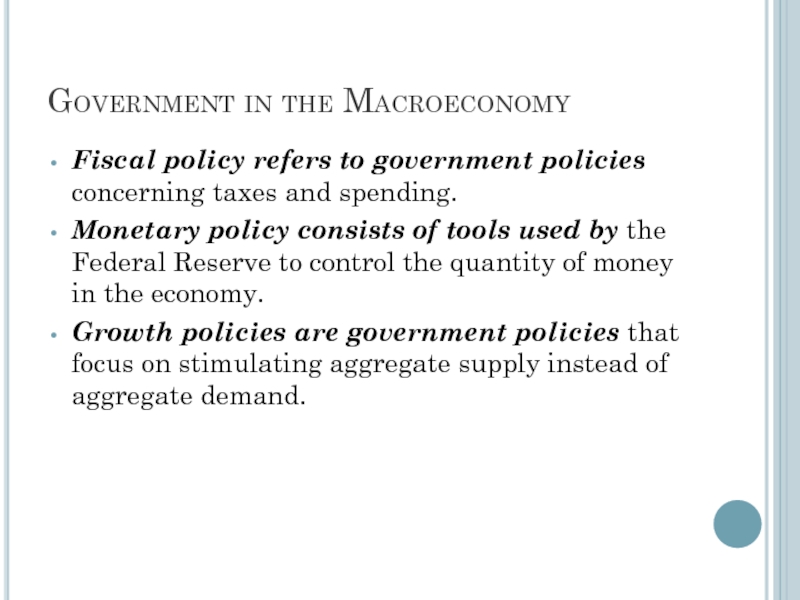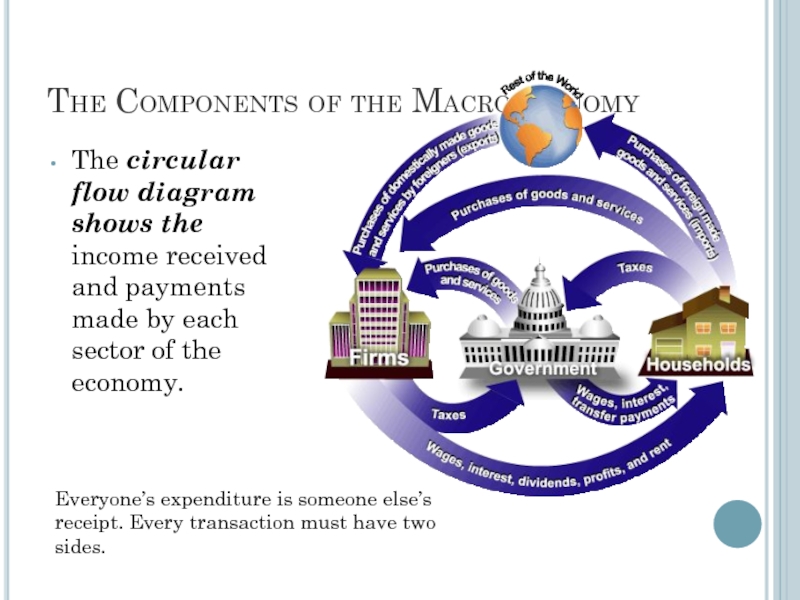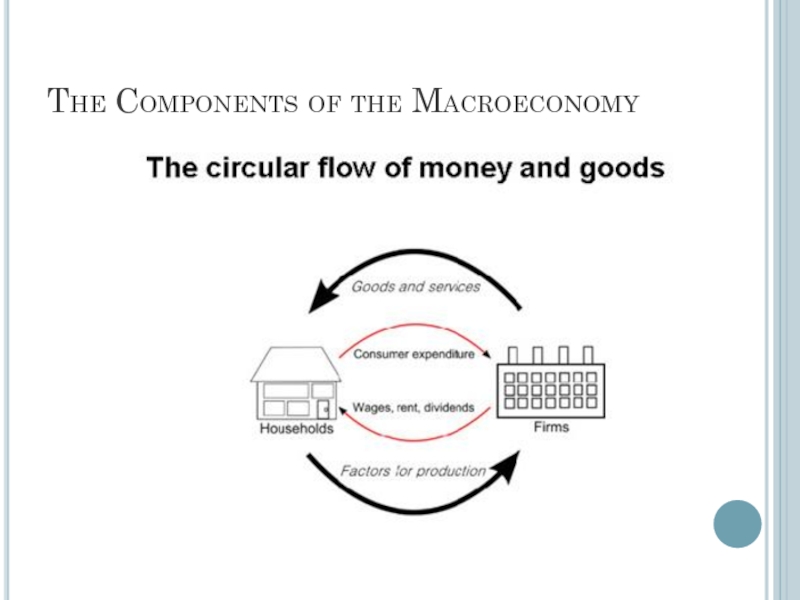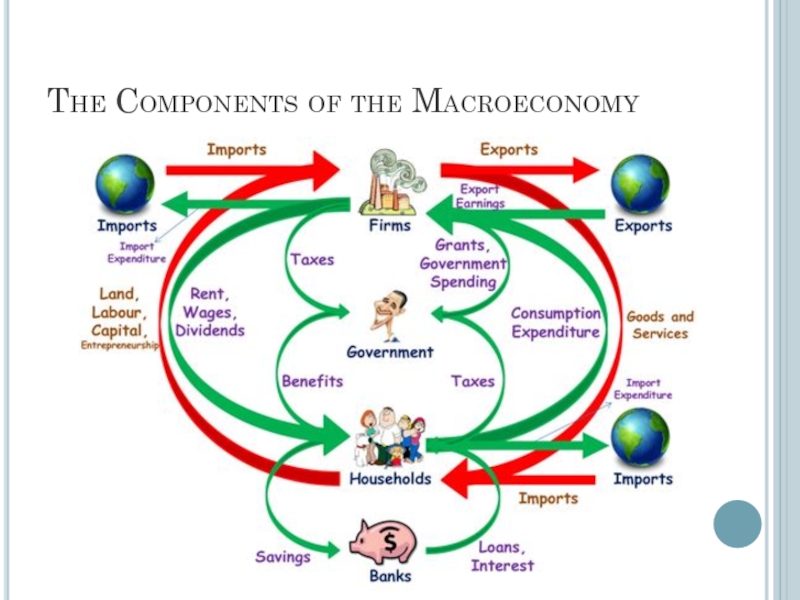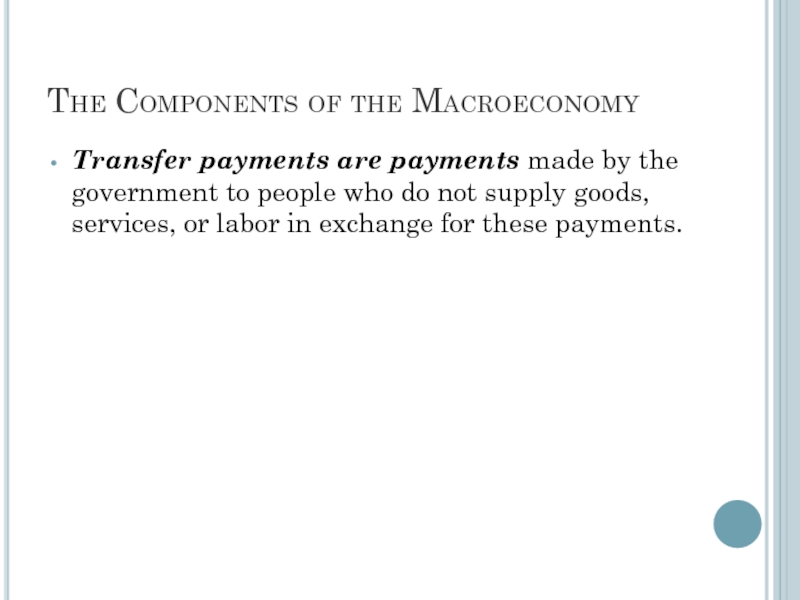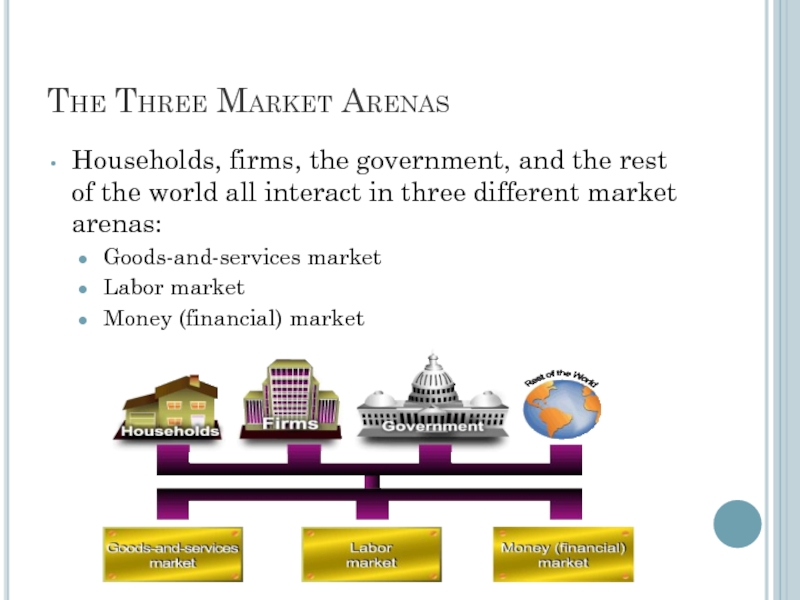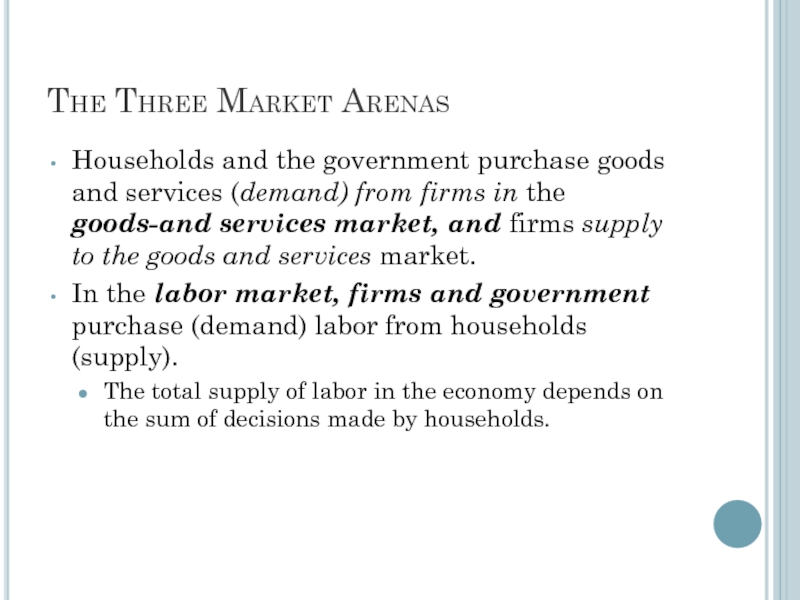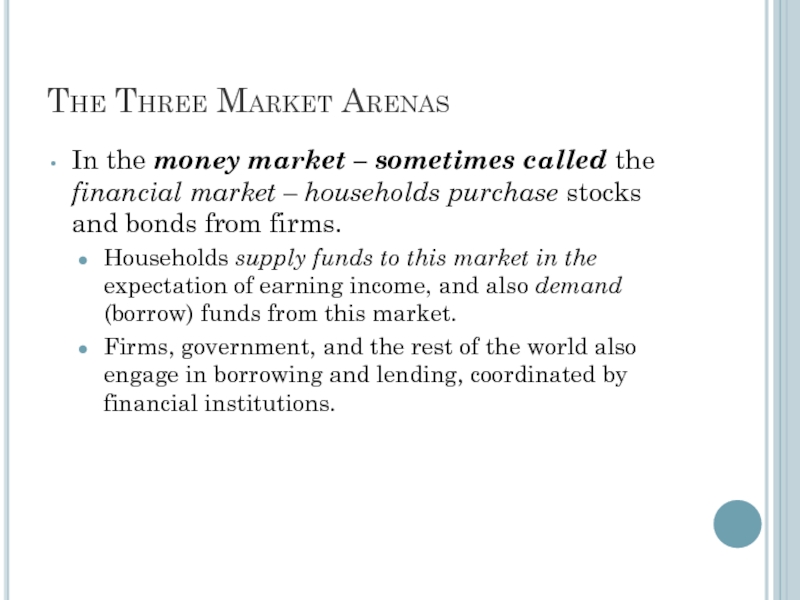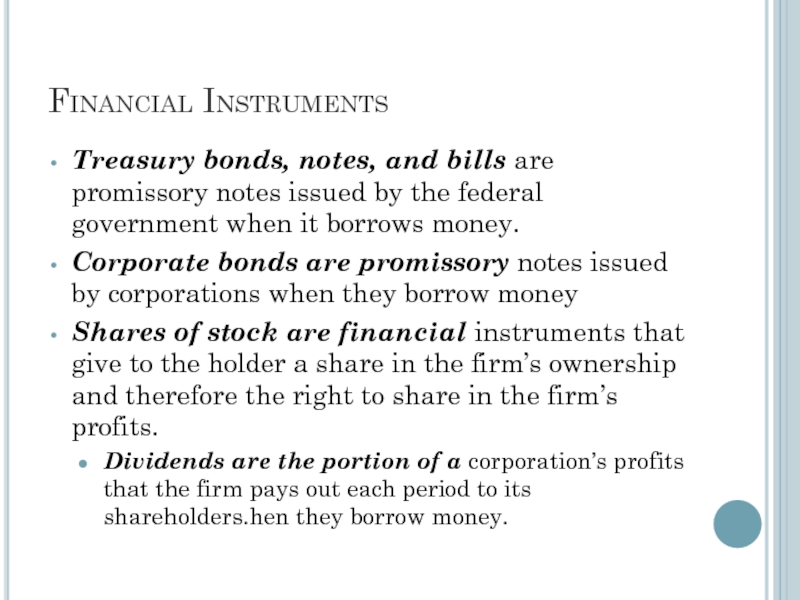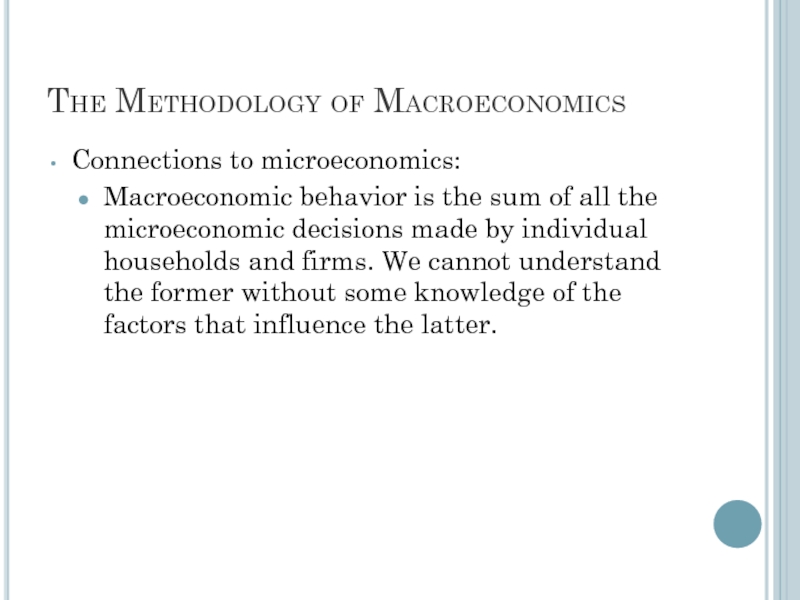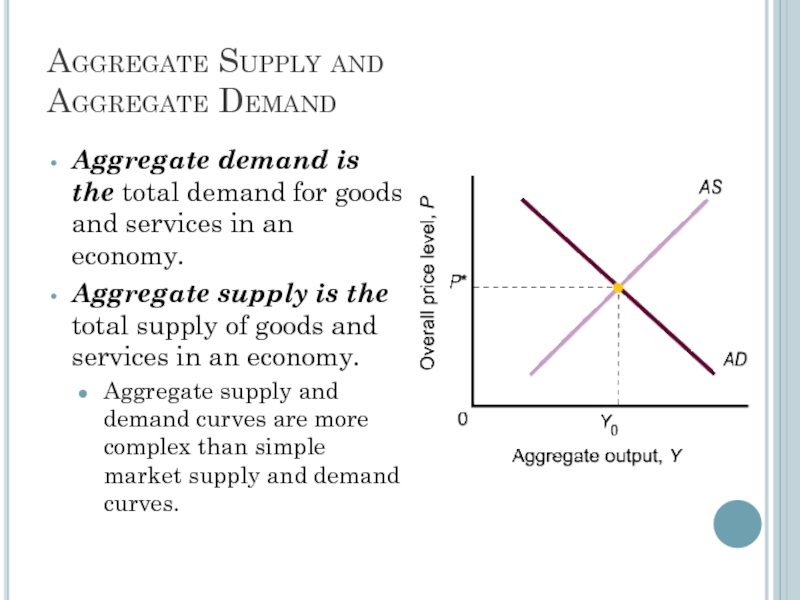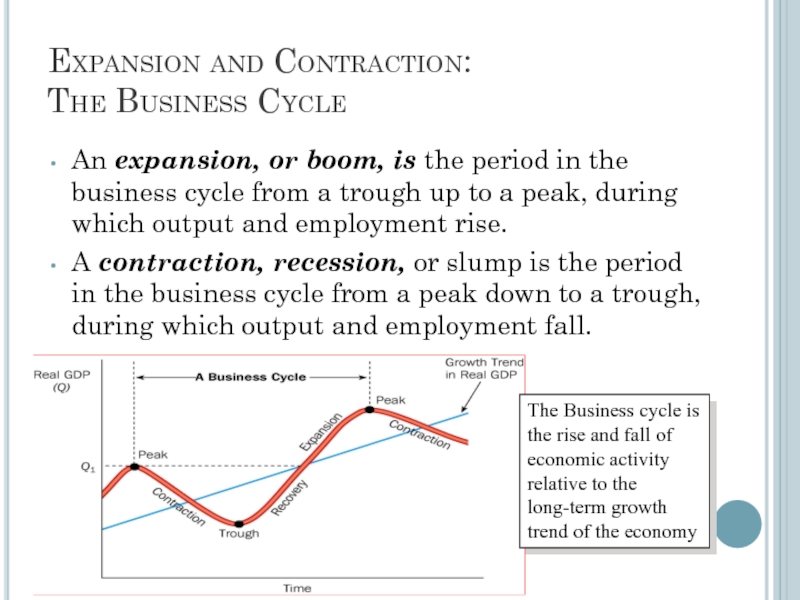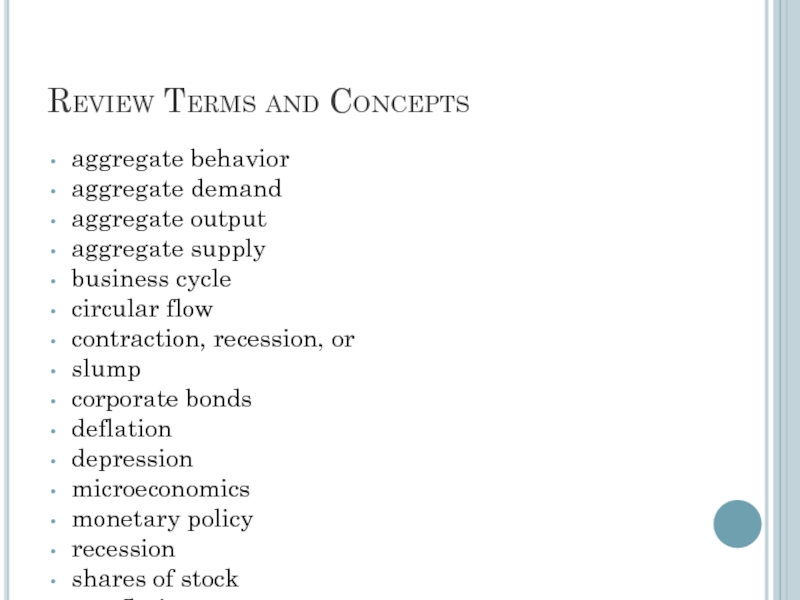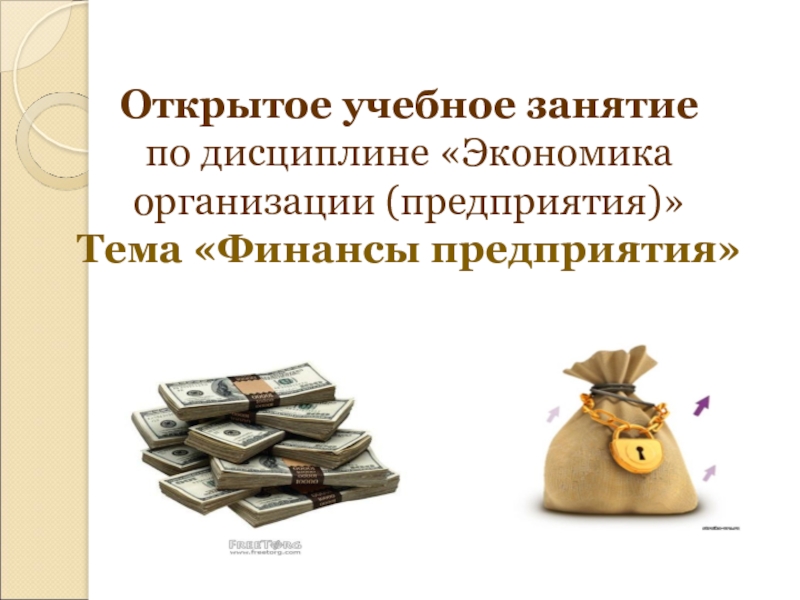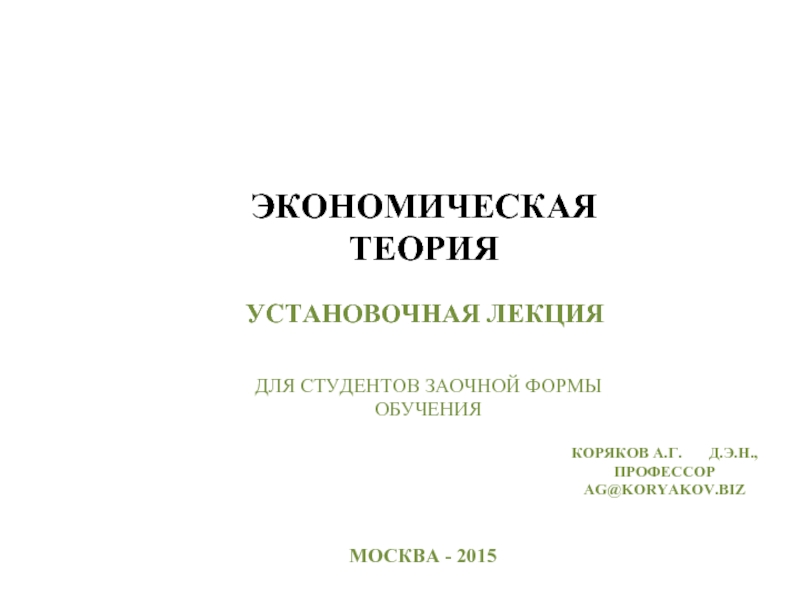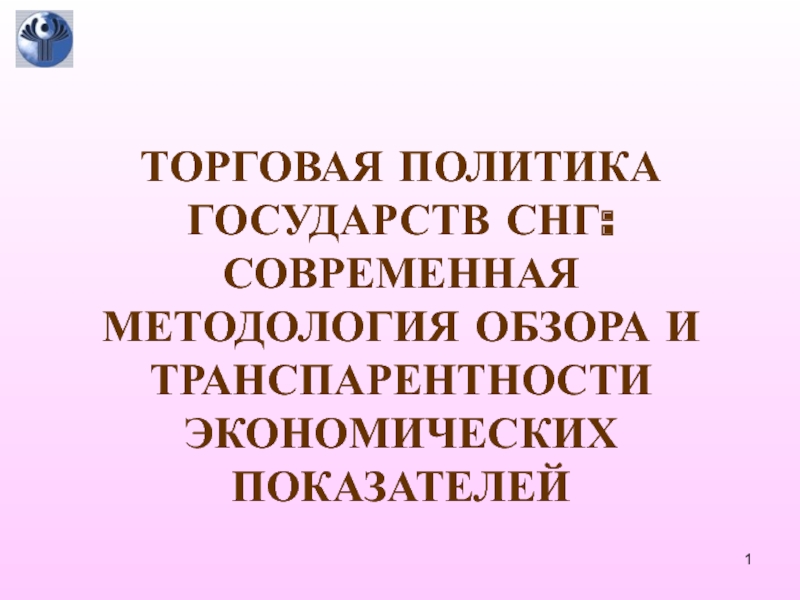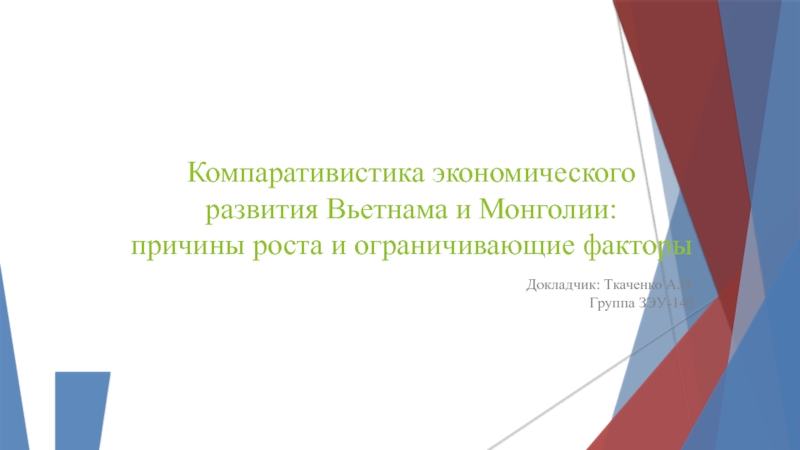- Главная
- Разное
- Дизайн
- Бизнес и предпринимательство
- Аналитика
- Образование
- Развлечения
- Красота и здоровье
- Финансы
- Государство
- Путешествия
- Спорт
- Недвижимость
- Армия
- Графика
- Культурология
- Еда и кулинария
- Лингвистика
- Английский язык
- Астрономия
- Алгебра
- Биология
- География
- Детские презентации
- Информатика
- История
- Литература
- Маркетинг
- Математика
- Медицина
- Менеджмент
- Музыка
- МХК
- Немецкий язык
- ОБЖ
- Обществознание
- Окружающий мир
- Педагогика
- Русский язык
- Технология
- Физика
- Философия
- Химия
- Шаблоны, картинки для презентаций
- Экология
- Экономика
- Юриспруденция
Introduction to Macroeconomics презентация
Содержание
- 1. Introduction to Macroeconomics
- 2. Intro individual decision-making Microeconomics examines the behavior
- 3. Intro When we study the consumption behaviour
- 4. Intro Microeconomists generally conclude that markets work
- 5. Intro Macroeconomists often reflect on the microeconomic
- 6. The Roots of Macroeconomics The Great Depression
- 7. The Roots of Macroeconomics Classical economists applied
- 8. The Roots of Macroeconomics In 1936, John
- 9. Recent Macroeconomic History Fine-tuning was the phrase
- 10. Why to Study Macroeconomics? Macroeconomics is the
- 11. Macroeconomic Concerns Three of the major concerns of macroeconomics are: Inflation Output growth Unemployment
- 12. Inflation and Deflation Inflation is an increase
- 13. Inflation
- 14. Output Growth: Short Run and Long
- 15. The Business cycle is the rise and
- 16. Ups and downs of the Business Cycle
- 17. Recent Macroeconomic History Stagflation occurs when the
- 18. Stagflation Stagflation is a contraction of a
- 19. Output Growth: Short Run and Long Run
- 20. Unemployment The unemployment rate is the percentage
- 21. Unemployment
- 22. Government in the Macroeconomy There are three
- 23. Government in the Macroeconomy Fiscal policy refers
- 24. The Components of the Macroeconomy The circular
- 25. The Components of the Macroeconomy
- 26. The Components of the Macroeconomy
- 27. The Components of the Macroeconomy Transfer payments
- 28. The Three Market Arenas Households, firms, the
- 29. The Three Market Arenas Households and the
- 30. The Three Market Arenas In the money
- 31. Financial Instruments Treasury bonds, notes, and bills
- 32. The Methodology of Macroeconomics Connections to microeconomics:
- 33. Aggregate Supply and Aggregate Demand Aggregate demand
- 34. Expansion and Contraction: The Business Cycle An
- 35. Review Terms and Concepts aggregate behavior aggregate
Слайд 2Intro
individual decision-making Microeconomics examines the behavior of units—business firms and households.
Macroeconomics
Aggregate behavior refers to the behavior of all households and firms together.
Слайд 3Intro
When we study the consumption behaviour or equilibrium of a consumer;
we study a UNIT and not the SYSTEM in which it is operating
Слайд 4Intro
Microeconomists generally conclude that markets work well.
Macroeconomists, however, observe that some
Sticky prices are prices that do not always adjust rapidly to maintain the equality between quantity supplied and quantity demanded.
Слайд 5Intro
Macroeconomists often reflect on the microeconomic principles underlying macroeconomic analysis, or
Слайд 6The Roots of Macroeconomics
The Great Depression was a period of severe
Stock Markets crashed!
9000 banks filed for bankruptcy
Banks that survived stopped giving loans.
People cut down spending
Large amounts of inventories started piling up
Businesses stopped production….layoffs!( 25% unemployment)
Purchasing power declined
Hawley – Smoot tariff imposed on imports in 1930
Decline in world trade & economic retaliation.
Слайд 7The Roots of Macroeconomics
Classical economists applied microeconomic models, or “market clearing”
However, simple classical models failed to explain the prolonged existence of high unemployment during the Great Depression. This provided the impetus for the development of macroeconomics
Слайд 8The Roots of Macroeconomics
In 1936, John Maynard Keynes published The General
Keynes believed governments could intervene in the economy and affect the level of output and employment.
During periods of low private demand, the government can stimulate aggregate demand to lift the economy out of recession.
Слайд 9Recent Macroeconomic History
Fine-tuning was the phrase used by Walter Heller to
The use of Keynesian policy to fine-tune the economy in the 1960s, led to disillusionment in the 1970s and early 1980s.
Слайд 10Why to Study Macroeconomics?
Macroeconomics is the study of the nation’s economy
We can use macroeconomic analysis to:
Understand why economies grow.
Understand economic fluctuations.
Make informed business decisions.
Слайд 11Macroeconomic Concerns
Three of the major concerns of macroeconomics are:
Inflation
Output growth
Unemployment
Слайд 12Inflation and Deflation
Inflation is an increase in the overall price level.
Hyperinflation
Hyperinflations are rare, but have been used to study the costs and consequences of even moderate inflation.
Deflation is a decrease in the overall price level. Prolonged periods of deflation can be just as damaging for the economy as sustained inflation.
Слайд 14Output Growth:
Short Run and Long Run
The business cycle is the
The main measure of how an economy is doing is aggregate output:
Aggregate output is the total quantity of goods and services produced in an economy in a given period
Слайд 15The Business cycle is the rise and fall of economic activity
Слайд 16Ups and downs of the Business Cycle
Peak: at the peak of
Contraction: A decline in the real GDP. If it falls for two consecutive quarters, it is said the economy to be in a recession.
Trough: The Low Point of the GDP, just before it begins to turn up.
Recovery: When the GDP is rising from the trough.
Expansion: when the real GDP expands beyond the recovery
Recession : two consecutive quarter declines in Real DP
Слайд 17Recent Macroeconomic History
Stagflation occurs when the overall price level rises rapidly
Слайд 18Stagflation
Stagflation is a contraction of a nation’s output accompanied by inflation
Staglation
A dramatic increase in oil prices caused the stagflation of the 1970s
Слайд 19Output Growth:
Short Run and Long Run
A recession is a period during
A prolonged and deep recession becomes a depression
Policy makers attempt not only to smooth fluctuations in output during a business cycle but also to increase the growth rate of output in the long-run.
Слайд 20Unemployment
The unemployment rate is the percentage of the labor force that
The unemployment rate is a key indicator of the economy’s health.
The existence of unemployment seems to imply that the aggregate labor market is not in equilibrium.
Why do labor markets not clear when other markets do?
Слайд 22Government in the Macroeconomy
There are three kinds of policy that the
Fiscal policy
Monetary policy
Growth or supply-side policies
Слайд 23Government in the Macroeconomy
Fiscal policy refers to government policies concerning taxes
Monetary policy consists of tools used by the Federal Reserve to control the quantity of money in the economy.
Growth policies are government policies that focus on stimulating aggregate supply instead of aggregate demand.
Слайд 24The Components of the Macroeconomy
The circular flow diagram shows the income
Everyone’s expenditure is someone else’s
receipt. Every transaction must have two sides.
Слайд 27The Components of the Macroeconomy
Transfer payments are payments made by the
Слайд 28The Three Market Arenas
Households, firms, the government, and the rest of
Goods-and-services market
Labor market
Money (financial) market
Слайд 29The Three Market Arenas
Households and the government purchase goods and services
In the labor market, firms and government purchase (demand) labor from households (supply).
The total supply of labor in the economy depends on the sum of decisions made by households.
Слайд 30The Three Market Arenas
In the money market – sometimes called the
Households supply funds to this market in the expectation of earning income, and also demand (borrow) funds from this market.
Firms, government, and the rest of the world also engage in borrowing and lending, coordinated by financial institutions.
Слайд 31Financial Instruments
Treasury bonds, notes, and bills are promissory notes issued by
Corporate bonds are promissory notes issued by corporations when they borrow money
Shares of stock are financial instruments that give to the holder a share in the firm’s ownership and therefore the right to share in the firm’s profits.
Dividends are the portion of a corporation’s profits that the firm pays out each period to its shareholders.hen they borrow money.
Слайд 32The Methodology of Macroeconomics
Connections to microeconomics:
Macroeconomic behavior is the sum of
Слайд 33Aggregate Supply and
Aggregate Demand
Aggregate demand is the total demand for goods
Aggregate supply is the total supply of goods and services in an economy.
Aggregate supply and demand curves are more complex than simple market supply and demand curves.
Слайд 34Expansion and Contraction:
The Business Cycle
An expansion, or boom, is the period
A contraction, recession, or slump is the period in the business cycle from a peak down to a trough, during which output and employment fall.
The Business cycle is the rise and fall of economic activity relative to the long-term growth trend of the economy
Слайд 35Review Terms and Concepts
aggregate behavior
aggregate demand
aggregate output
aggregate supply
business cycle
circular flow
contraction, recession,
slump
corporate bonds
deflation
depression
microeconomics
monetary policy
recession
shares of stock
stagflation
sticky prices
supply-side policies
transfer payments
Treasury bonds, notes, bills
unemployment rate
dividends
expansion or boom
fine tuning
fiscal policy
Great Depression
hyperinflation
inflation
macroeconomics
microeconomic
foundations of
macroeconomics
